Thinking About an Epic Fantasy Tattoo? An Artist’s Guide to Getting It Right
Let’s be real, in my time as a tattoo artist, I’ve seen just about every trend come and go. But some things are forever. Fandom tattoos are one of them, and nothing compares to the massive wave of requests inspired by that one iconic fantasy series. You know the one—dragons, direwolves, and impossibly cool swords. For years, my consultation chair was filled with people wanting to wear their love for that modern mythology on their skin.
In this article
I’ve tattooed more house sigils and mythical beasts than I can count, from tiny, subtle nods behind an ear to massive back pieces that took over 50 hours. And I’ve learned that this isn’t just about liking a story. It’s about translating something deeply meaningful into permanent art.
A tattoo is a true collaboration. It starts with your passion, but it becomes real through an artist’s hands and experience. If you’re thinking about getting a tattoo from this world, I want to walk you through the process from my side of the needle. We’ll go way beyond just picking a cool picture online. This is about making smart decisions for art you’ll carry for life, ensuring it looks just as awesome in twenty years as it does on day one.
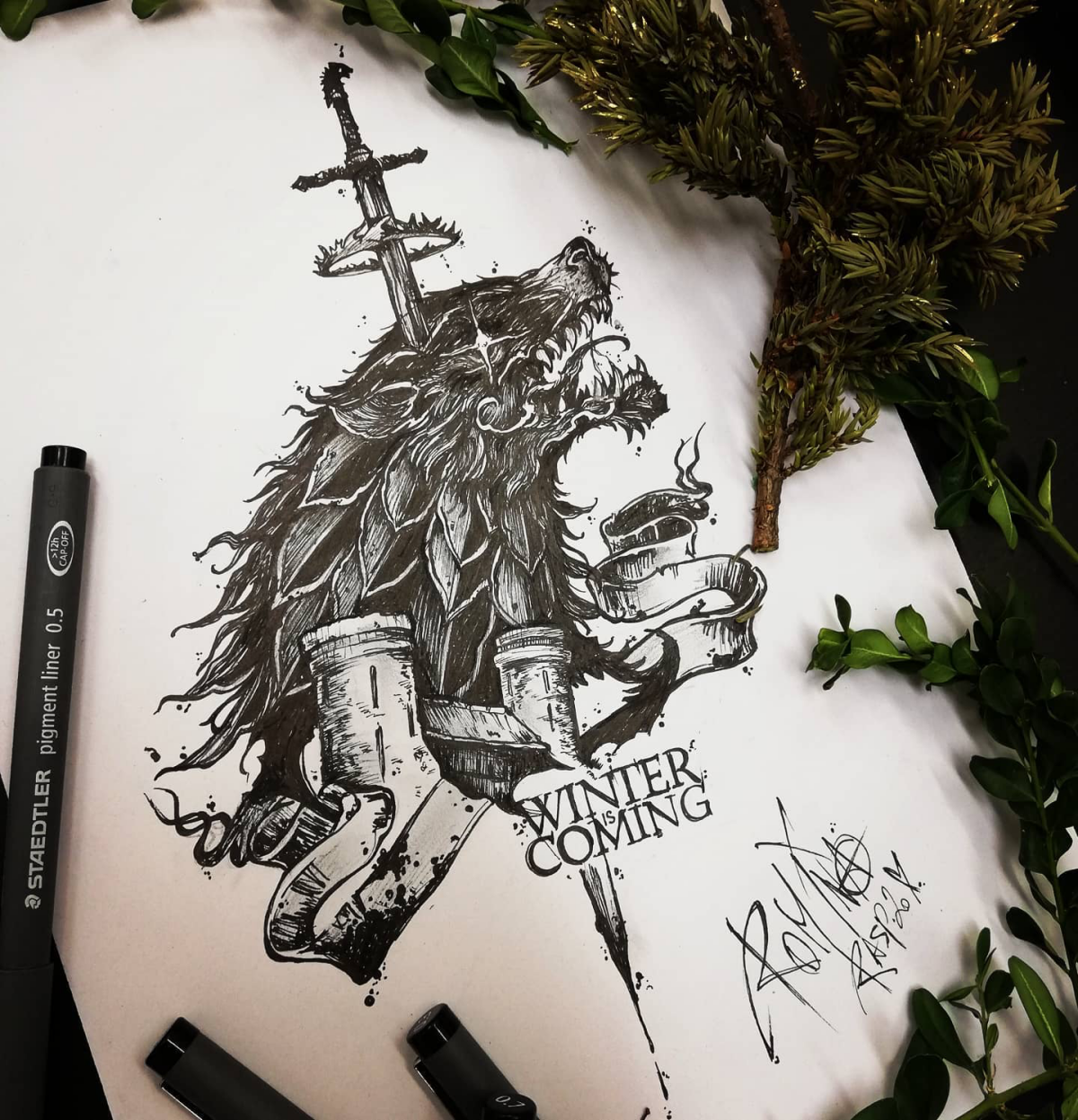
The First Step: Your Consultation Is Everything
So many people think the first meeting is just to get a price. Honestly, in my studio, it’s the most critical part of the entire journey. This is where we lay the foundation. You bring the vision, and I bring the technical and artistic know-how to make it work on skin. A screenshot of a cool sigil you found is a great starting point, but it’s not the final design.
My first question is always the same: “So, what does this symbol mean to you?” Your answer tells me everything. Someone who wants a direwolf sigil because they value loyalty and family needs a totally different design than someone who just thinks wolves are fierce. For the first person, we might emphasize the protective, noble nature of the animal. For the second, we might lean into its raw, wild side. The story behind your choice literally shapes the art.
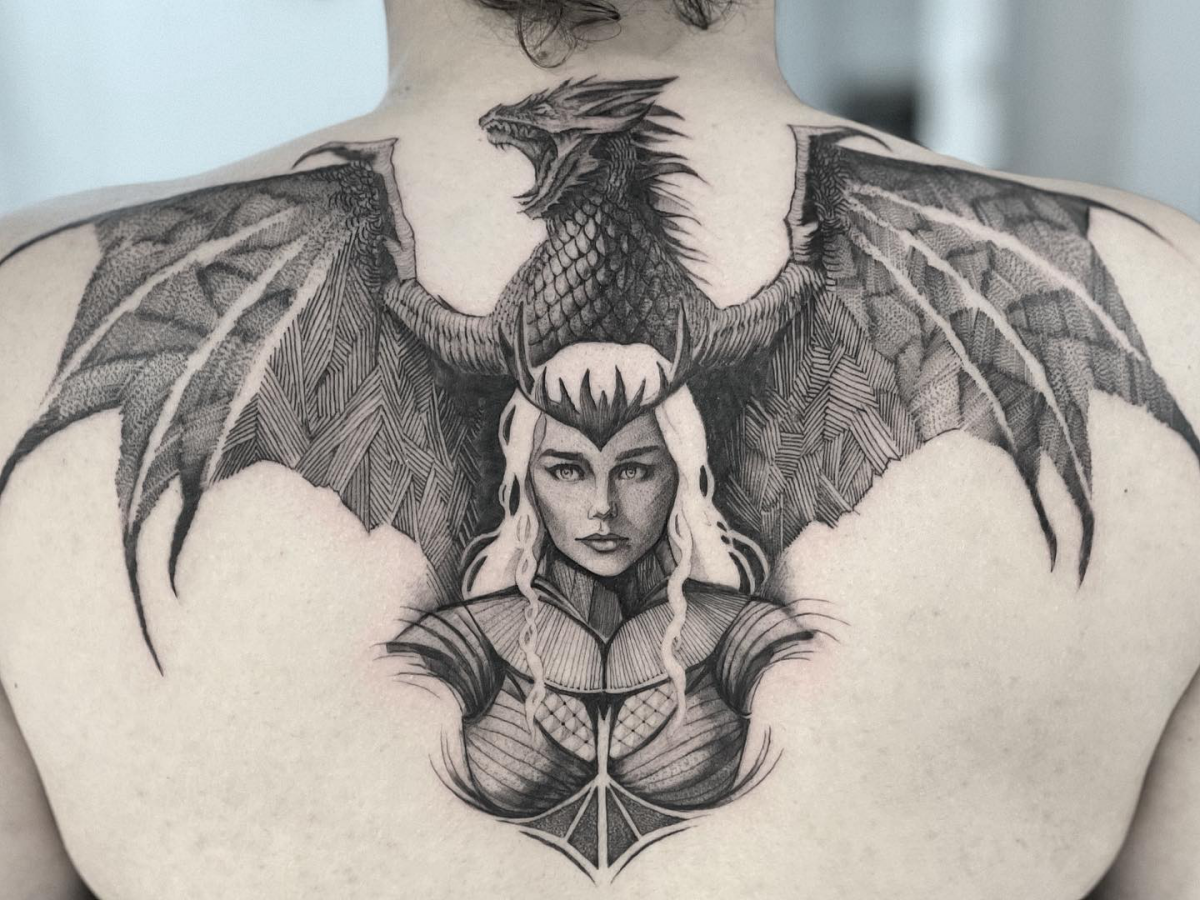
Oh yeah, and we have to talk about the ethics of it all. I’ll never directly copy another person’s custom tattoo. It’s disrespectful to the original artist and their client. More importantly, you deserve something that’s 100% yours, designed to fit your body. We’ll use existing art as inspiration, but our goal is always to create something original.
A quick tip to make your consultation super productive? Come prepared. Here’s a little checklist:
- Reference Images: Bring a few pictures that capture the vibe you’re going for, but please don’t be married to one specific image. Let us get creative!
- Placement Photo: Snap a clear photo of the exact spot on your body where you want the tattoo.
- Your “Why”: Be ready to talk about why you want this piece. It helps us connect with the project.
- Your Budget: Be upfront about what you’re comfortable spending. It’s not an awkward conversation; it helps us design something amazing within your means.
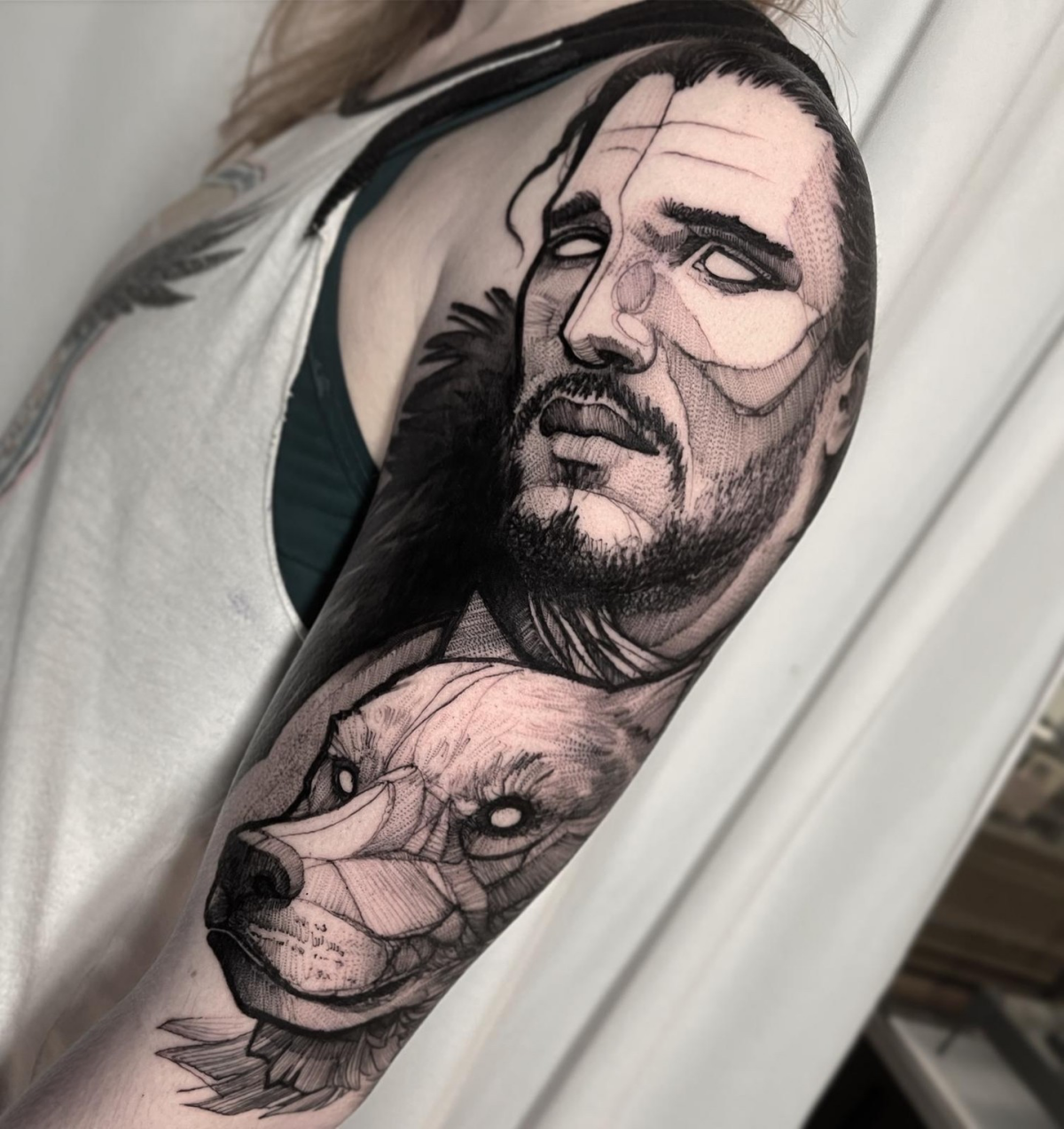
How to Find the Right Artist (and Avoid the Wrong One)
When I say “find a specialist,” especially for something complex like a portrait, I don’t just mean someone with a decent portfolio. You need to do a little homework.
Start on social media. Search for hashtags like
fantasytattoo,
illustrativetattoo,
realismtattoo, or
blackworktattoo. When you find an artist you like, go deep into their portfolio. Don’t just look at their top nine posts. Are their lines clean and consistent? Is their shading smooth? For color tattoos, are the colors vibrant and fully saturated?
Heads up! Here’s a critical pro-tip for vetting an artist, especially for realism: Ask to see photos of HEALED work. Fresh tattoos always look amazing—they’re bold, sharp, and the skin is still swollen, which hides minor flaws. Healed work, especially photos that are a year or older, shows the artist’s true skill. It tells you if their lines hold up and if their shading stays smooth over time. A great artist will be proud to show you their healed pieces.
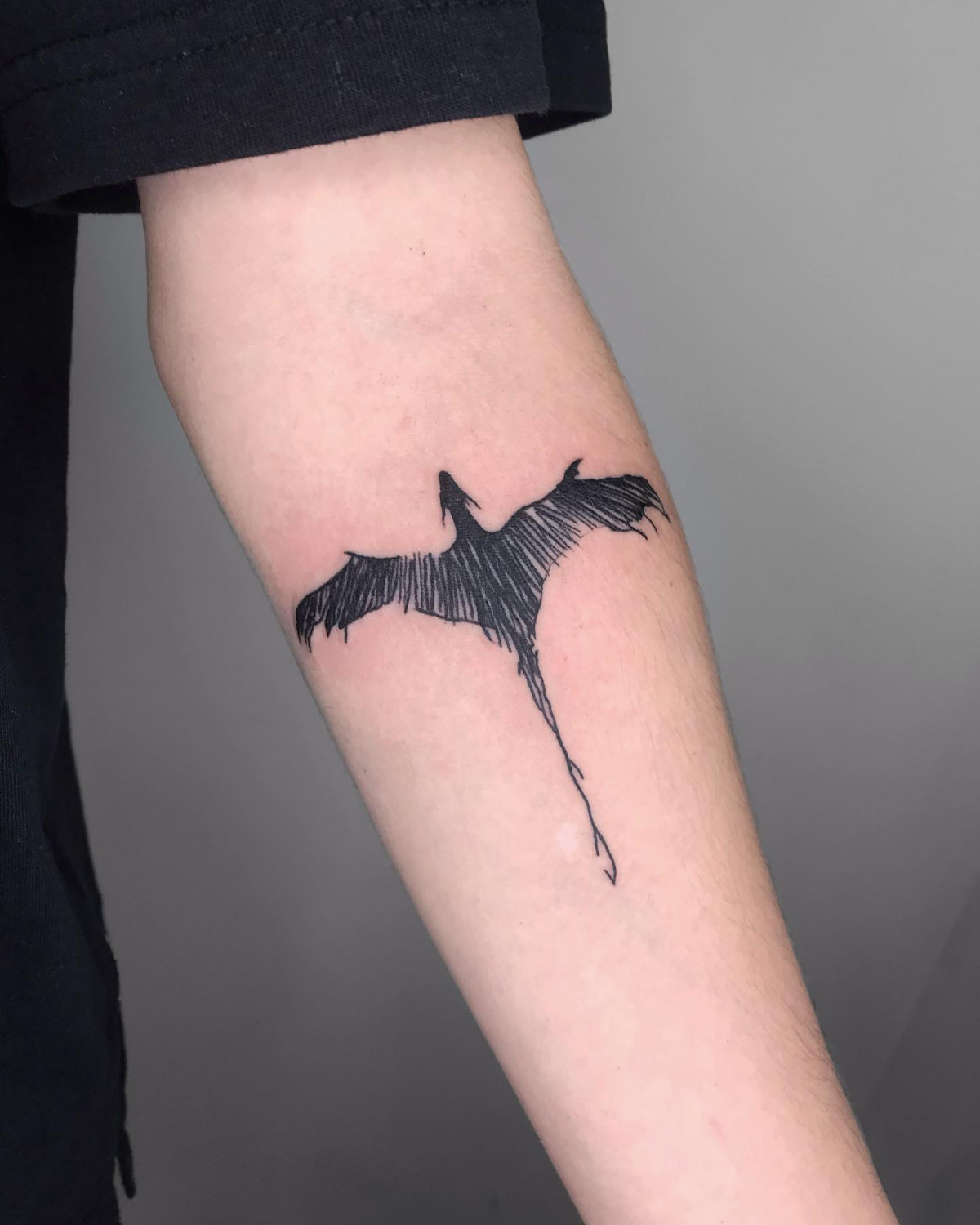
Let’s Geek Out: The Science of Skin and Ink
Understanding a little bit about how tattoos actually work is key to getting a good one. Your skin isn’t paper; it’s a living, changing canvas. We deposit ink into the dermis, the stable layer right below the surface skin that’s always shedding. The tattoo machine’s needle moves incredibly fast, between 50 and 3,000 times a minute, and getting the depth just right is a skill an artist develops over thousands of hours.
Too shallow? The ink fades away. Too deep? The ink can spread out under your skin, causing the lines to “blow out” and look blurry. It’s a feel, a sixth sense for skin.
Ink itself is fascinating. Black ink is generally carbon-based, with larger pigment particles. This is a big reason why black lines and shading tend to hold up the best over decades. Colors are made from different compounds, and while modern inks are incredibly safe and stable, some brighter colors (like reds and yellows) have smaller particles. They can be more prone to breaking down from sun exposure. That stunning fiery red from a dragon’s mouth needs lifelong protection from UV rays to stay vibrant.
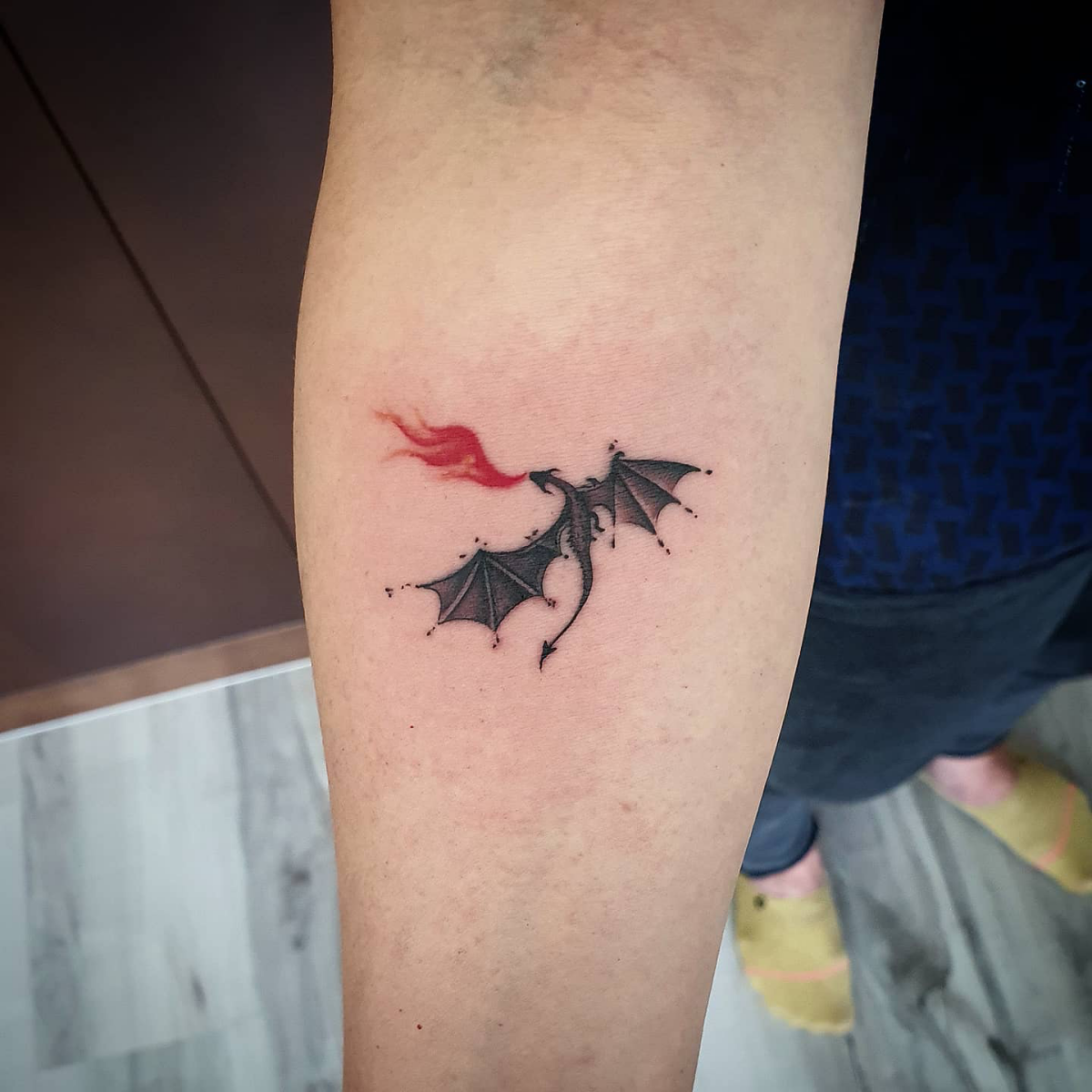
This is why hyper-detailed, tiny tattoos can be a risky bet. A miniature, intricate throne of swords might look mind-blowing when it’s fresh. But in 10 or 15 years, as the lines naturally settle and thicken just a tiny bit, those little swords can blur into an unreadable grey smudge. A good artist will design with aging in mind, maybe suggesting a slightly larger size or simplifying the details to ensure your tattoo is still recognizable for years to come. That’s not a limitation—it’s smart planning.
Common Themes and Pro Techniques
Okay, let’s get practical. Most requests for this kind of fantasy art fall into a few categories. Here’s how a professional approaches them.
House Sigils and Symbols
This is the bread and butter. The direwolf, the three-headed dragon, the lion. The style you choose, however, changes everything.
One popular approach is Blackwork Style. Think bold, powerful, solid black shapes. It’s incredibly striking and ages beautifully. The vibe is graphic and timeless. Because it often relies on solid fills rather than intricate shading, it can sometimes be a bit faster (and thus more budget-friendly) than more detailed styles. For this, I’d use a tight liner for the outlines and a larger “magnum” needle to pack in the black ink efficiently and smoothly.
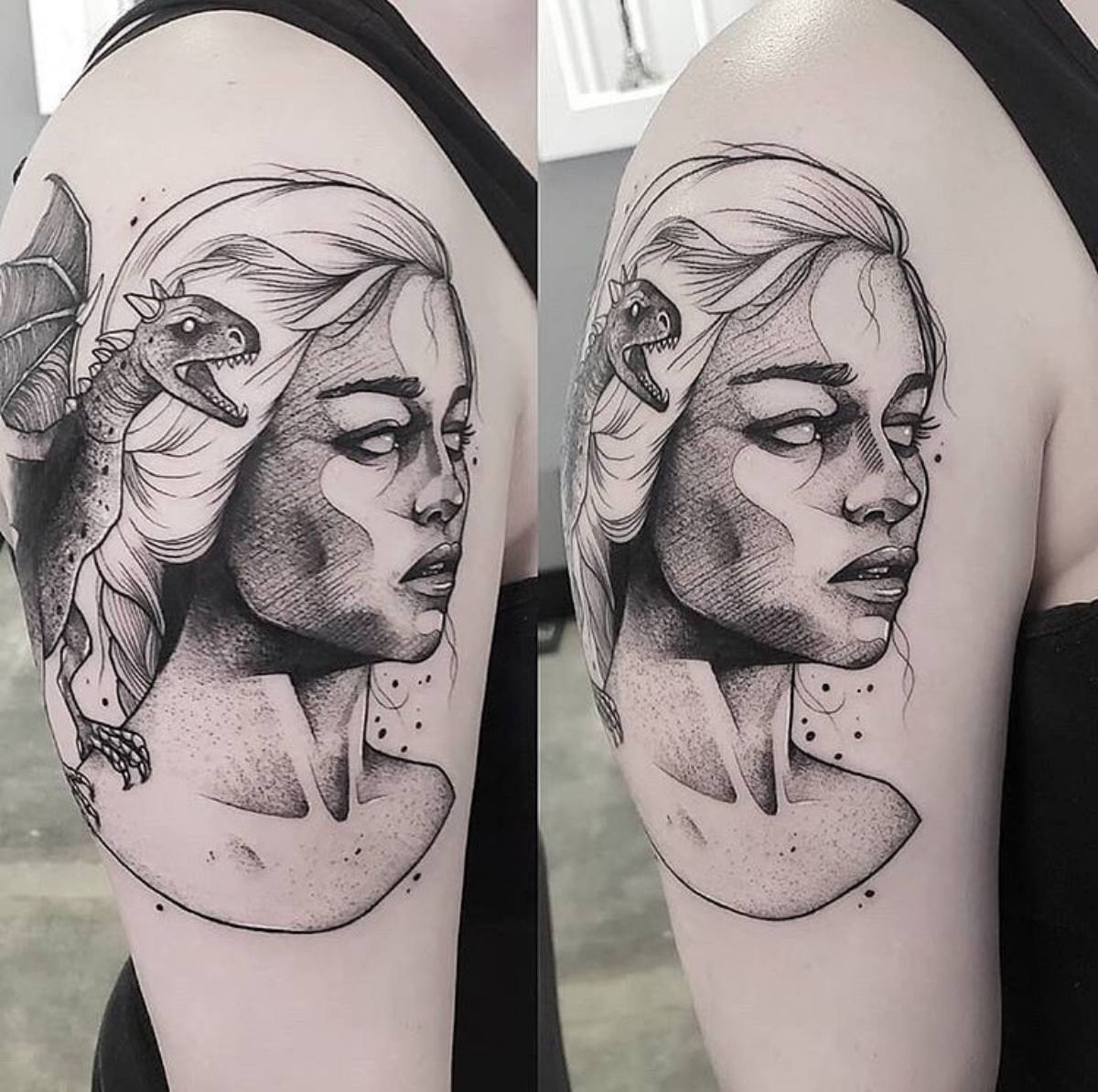
Then there’s the Illustrative Style. This looks more like a detailed drawing on your skin, with varying line weights, delicate shading, and texture. For a direwolf, I might use fine lines to show fur and use a “whip shading” technique to create soft, wispy gradients. It gives the piece depth and a more dynamic, realistic feel. This approach definitely takes more time and skill, which means a higher price tag, but the result is a unique piece of fine art.
Quick homework for you: Print your design idea in a few different sizes. Use some medical tape to stick it on the spot you’re considering. Wear it for a full day. See how it moves with your body, how it looks in the mirror. Do you still love the placement after 24 hours? This little test can save you a lot of second-guessing.
Portraits and Characters
Tattooing a recognizable human face is one of the most difficult skills in our industry. If you want a realistic portrait of the Mother of Dragons or the clever Imp, you absolutely must find a specialist in realism. Do not go to a generalist for this.
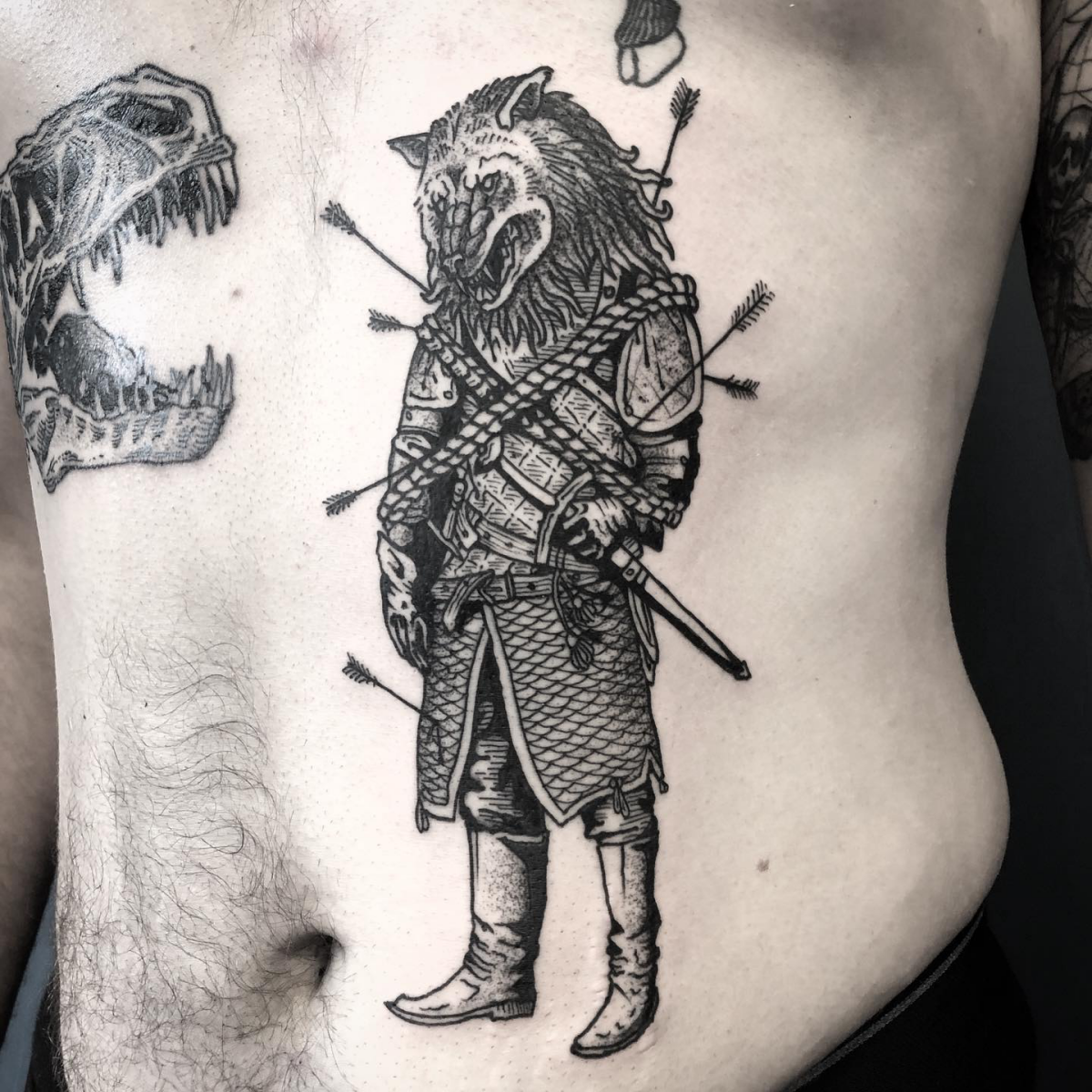
A realism artist uses a huge range of needles and diluted black inks called “greywash” to build up smooth, three-dimensional tones. Early in my career, I learned this the hard way by taking on a portrait I wasn’t ready for. The likeness was just slightly off, and it taught me a brutal lesson. I spent years studying and practicing before I ever offered portraits again. A bad portrait is heartbreaking and often results in needing a large, expensive cover-up. Be honest with your artist about your expectations, and expect them to be honest about their abilities.
Objects of Power
Items like a Valyrian steel dagger or a Weirwood tree are all about texture. The challenge is making metal look sharp and ancient bark look rough on skin.
For that signature rippled steel, the trick is contrast. I use carefully blended black and grey shades right next to bright white highlights. This contrast fools the eye into seeing a metallic sheen. For the Weirwood tree, it’s all about creating that rough bark texture with stippling techniques, then packing in a deep, vibrant crimson for the bleeding face. That contrast between pale bark and blood-red is what makes the design pop. (By the way, I always warn clients that red ink can be more reactive on sensitive skin, so we sometimes do a tiny spot test first).
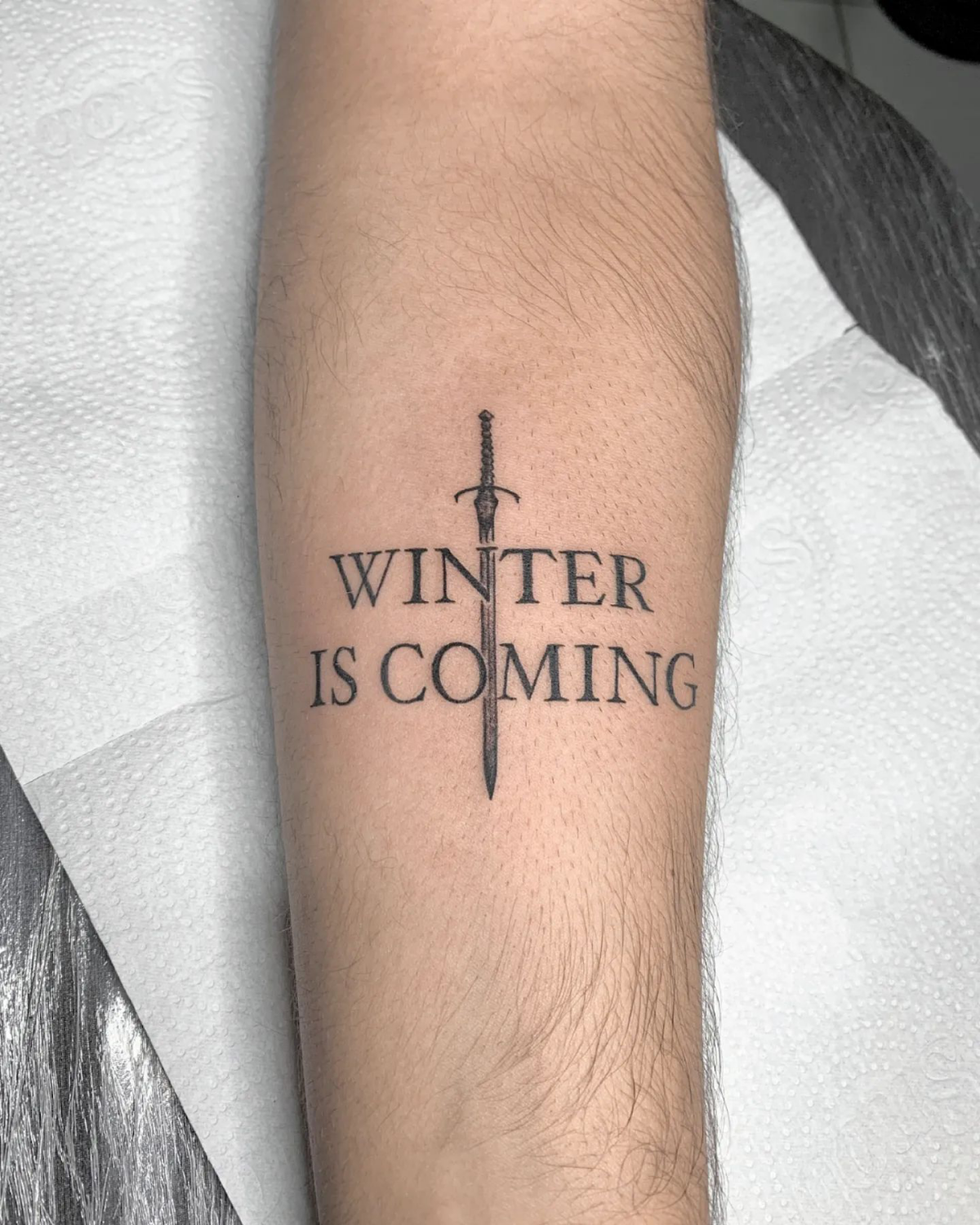
Let’s Talk Money: What a Good Tattoo Really Costs
People get sticker shock sometimes, so let’s just be transparent about it. Why are custom tattoos expensive? You aren’t just paying for the hour I’m tattooing you.
You’re paying for the hours I spent drawing and refining your unique design. You’re paying for the thousands of dollars in sterile, single-use equipment that keeps you safe. You’re paying for my years of training, my art education, and the countless hours I’ve practiced to become an expert. You’re paying for a piece of custom art that will literally last a lifetime.
To give you a realistic ballpark, most reputable, experienced artists in major cities charge between $150 and $300 per hour. A simple, palm-sized direwolf sigil might take 2 hours, putting you in the $300-$600 range. A detailed, realistic portrait could easily be a 6-hour session or more, running $900-$1800+. Expect to put down a non-refundable deposit of $100-$200 just to book the appointment, which usually comes off the final price.
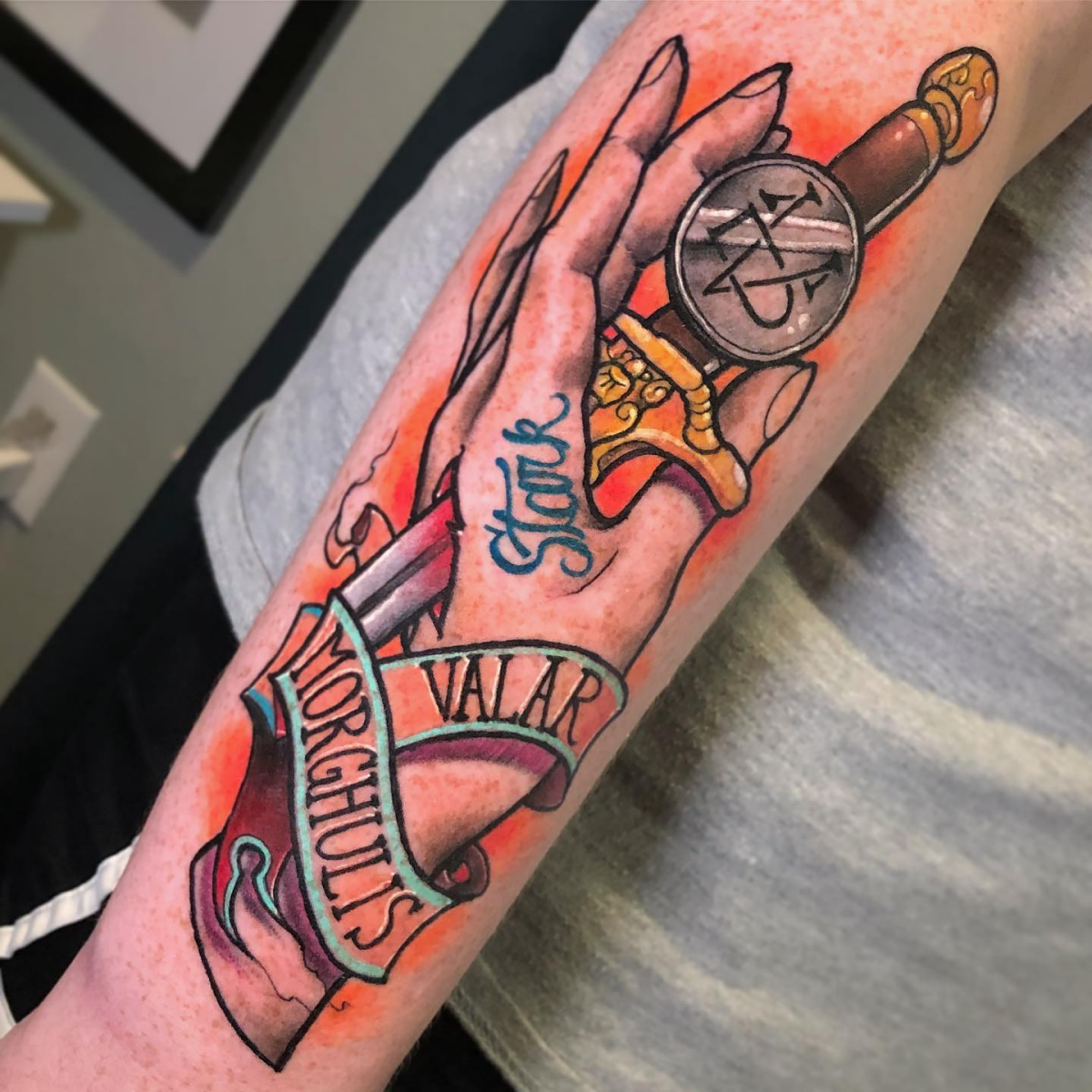
Here are a few common mistakes to avoid:
- Don’t haggle on price. It’s considered an insult to the artist and their craft. If it’s out of your budget, it’s better to say, “My budget is X, what can we create for that?”
- Don’t rush the process. A good artist is often booked out for months. Be patient. It’s worth the wait.
- Listen to your artist’s advice. If they tell you your design is too small or needs to be simplified to age well, trust them. They’re the expert.
Healing, Safety, and Keeping It Fresh Forever
My responsibility doesn’t end when you walk out the door. A perfect tattoo can be ruined by bad aftercare.
First, safety is non-negotiable. Everything that touches your skin in my studio is single-use and sterile. Needles are opened in front of you. My station is draped in disposable barriers. If a studio looks dirty or the artist isn’t using gloves, walk out immediately. The risk of infection is not worth it.
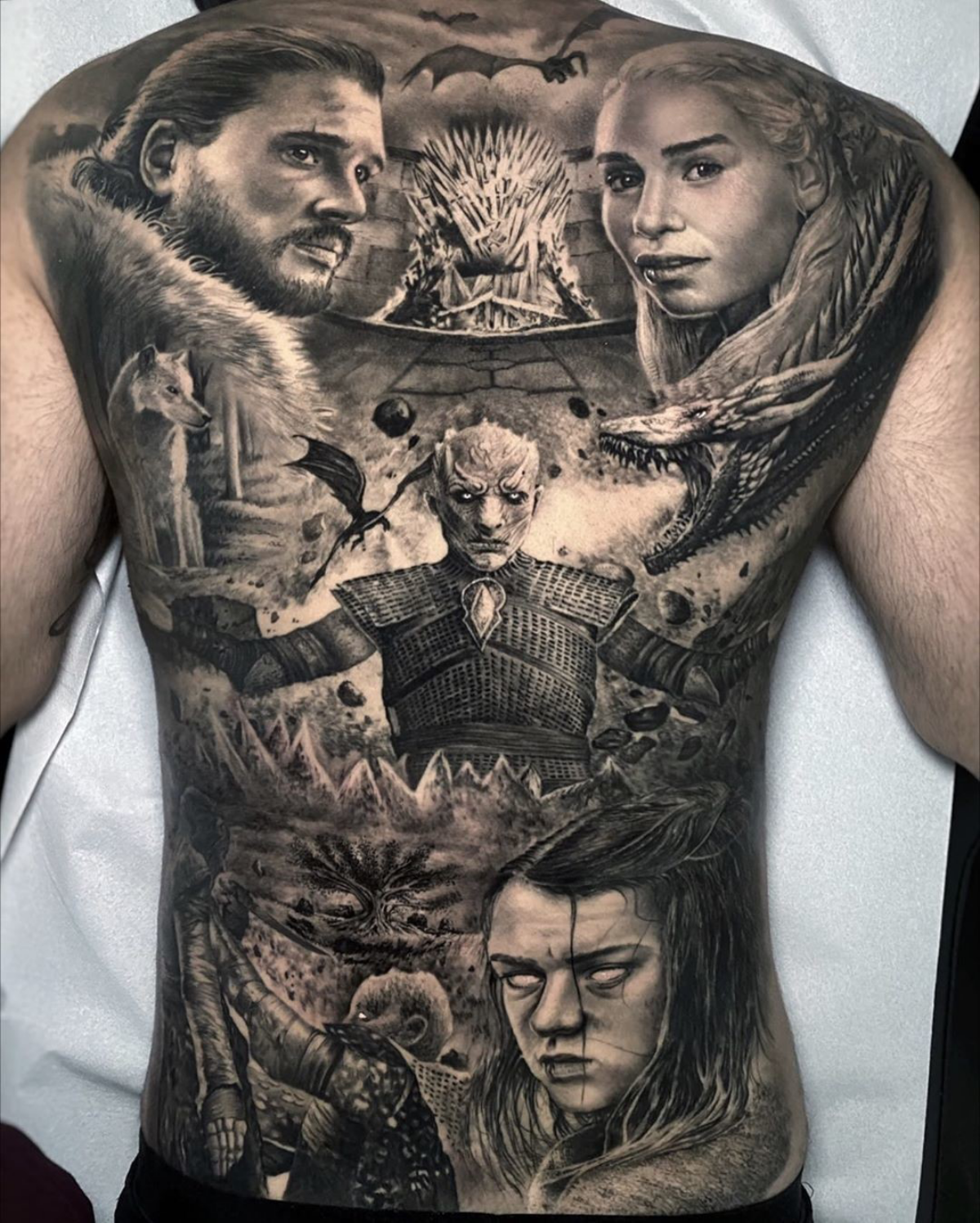
For healing, I’ll wrap you up with a clear, breathable bandage that you’ll keep on for 3-5 days. After that, your job is simple:
- Gently wash the tattoo twice a day with a mild, unscented soap. Think Dial Gold or Cetaphil. Don’t scrub it! Pat it dry with a clean paper towel.
- Apply a very thin layer of unscented lotion. Something simple like Lubriderm or Aveeno is perfect. Don’t go fancy, and don’t smother it.
- For about two weeks, no soaking. That means no baths, swimming, or hot tubs. Showers are fine.
- Keep it out of the sun! A healing tattoo is an open wound; sun can do serious damage.
Your tattoo will be sore and red for a couple of days, which is normal. But if you see increasing pain after day three, a foul smell, or yellow/green pus, those are signs of infection. Call a doctor. I’m an artist, not a medical professional, and your health is priority number one.
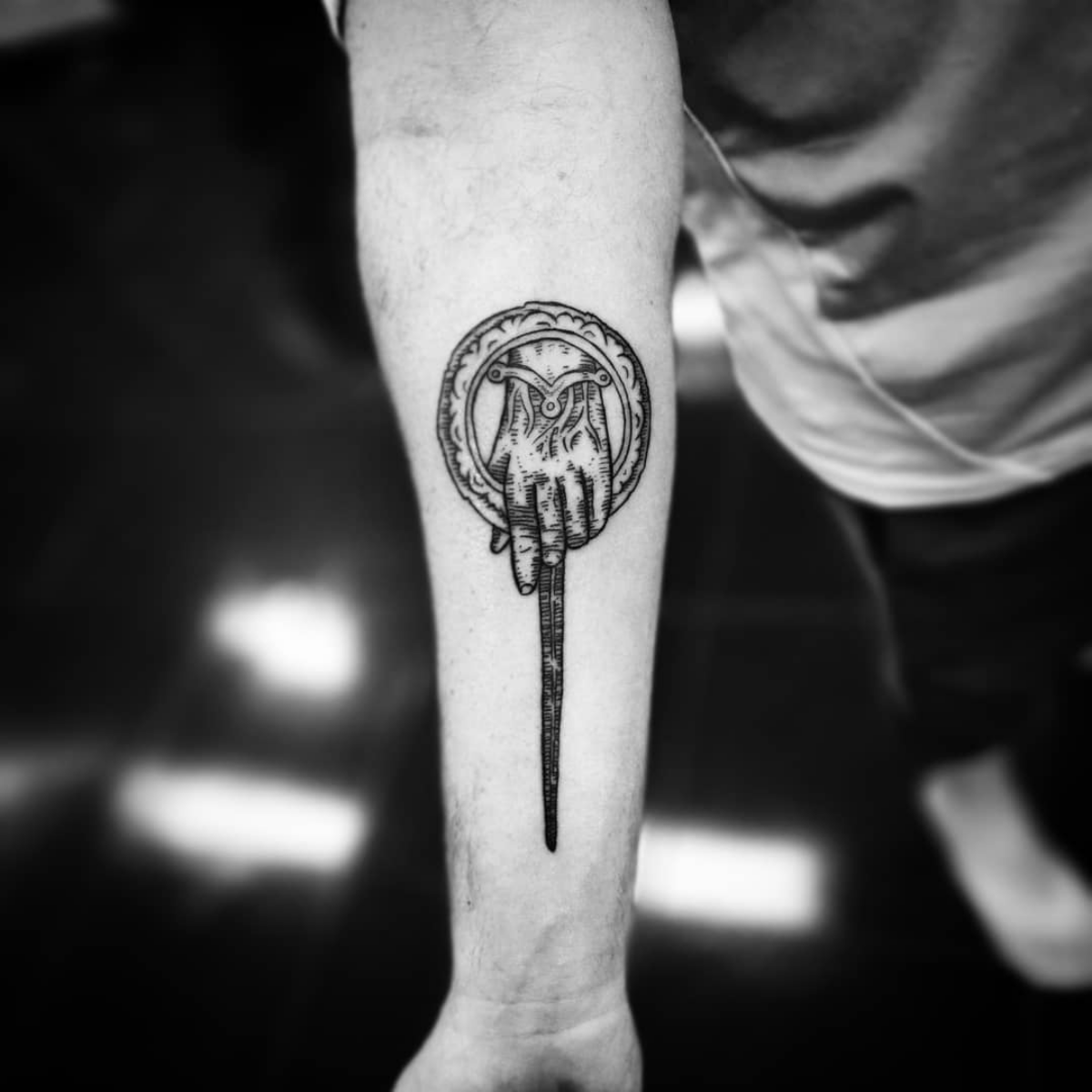
And for the rest of your life? The sun is your tattoo’s number one enemy. UV rays break down ink. A high-SPF sunscreen on your art is the single best thing you can do to keep it looking sharp forever. It’s a simple habit that makes all the difference.
Galerie d’inspiration
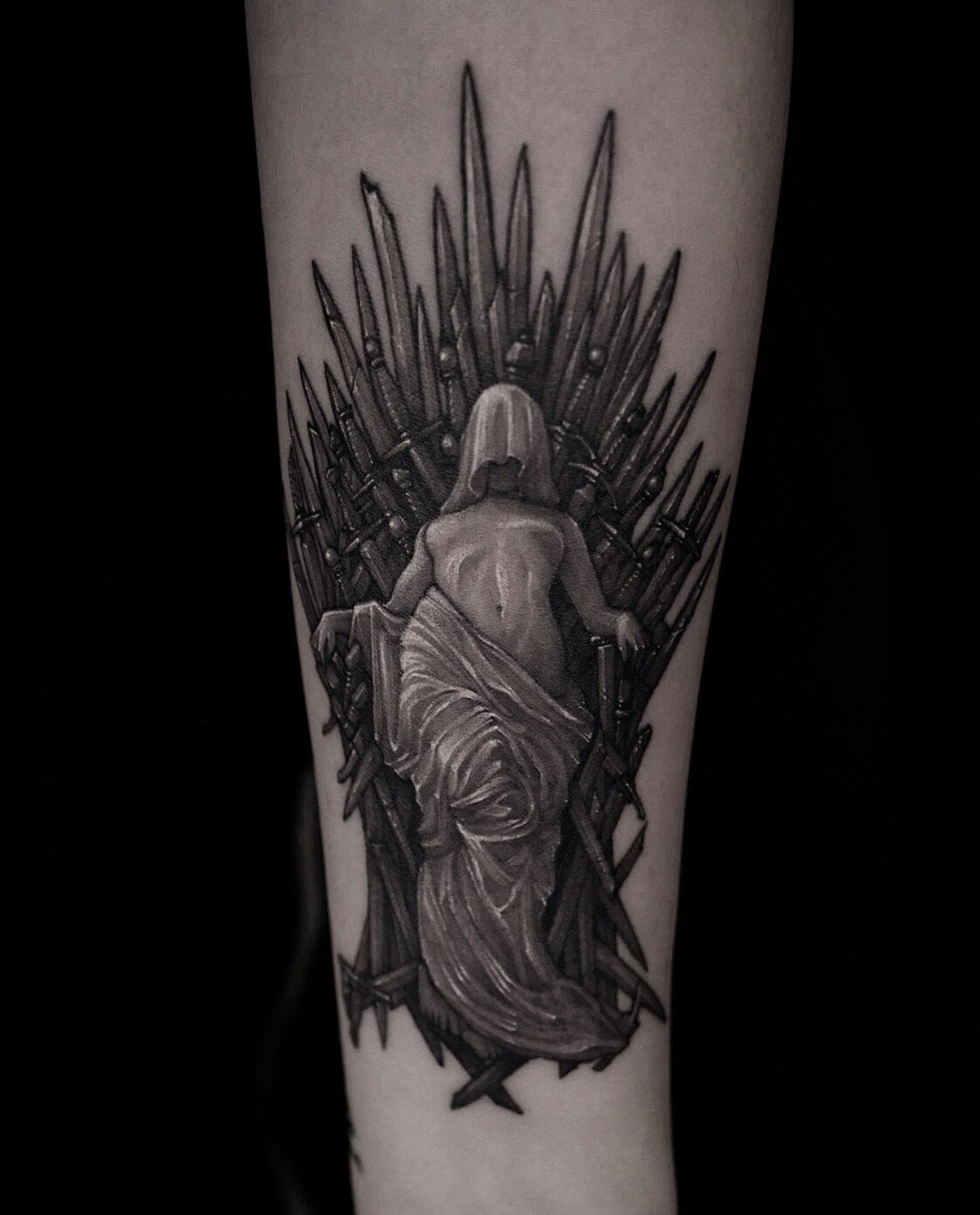
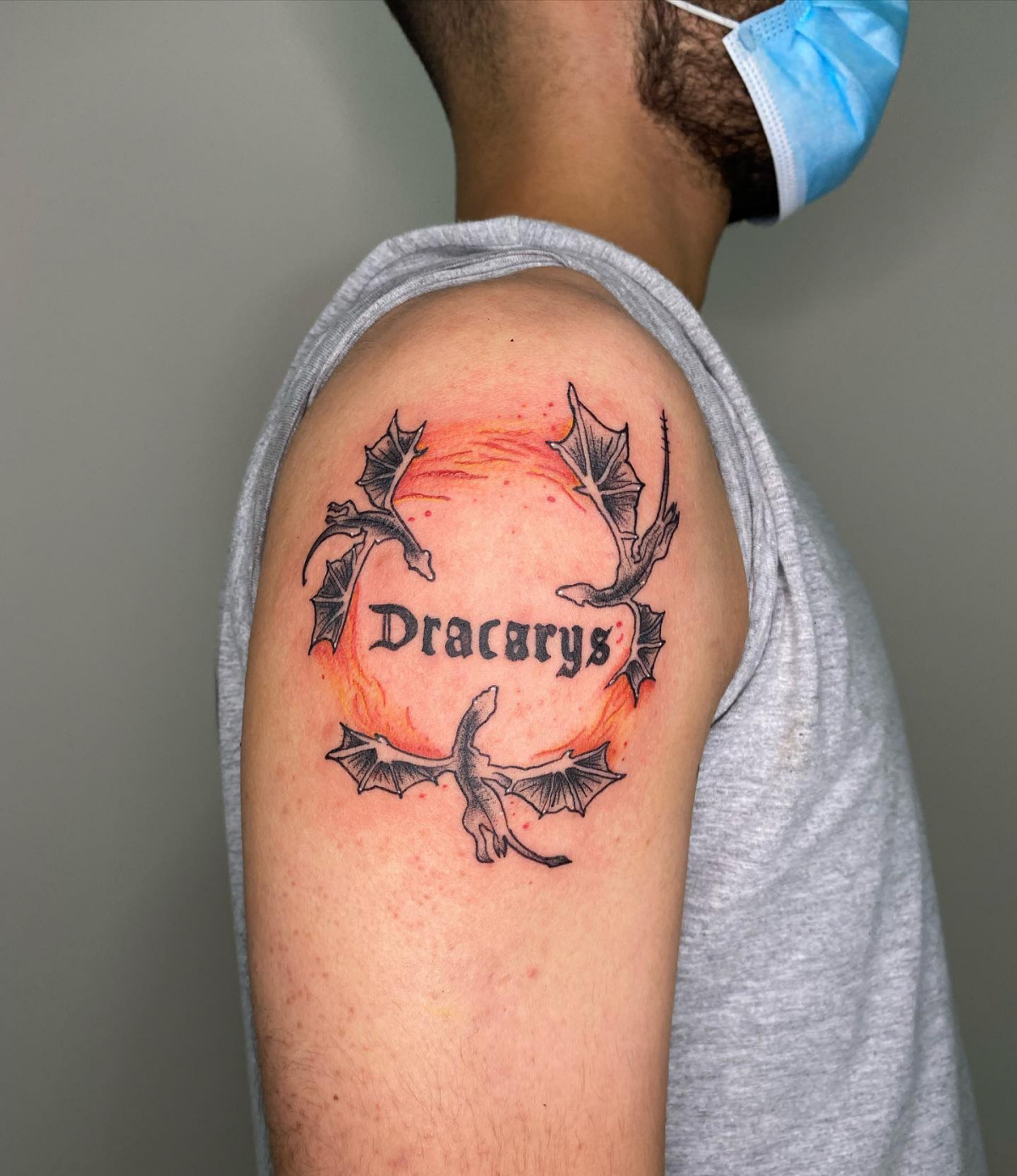
Beyond the obvious symbols, consider the “deep cuts.” Instead of a full direwolf, perhaps just the Stark motto, “Winter Is Coming,” in a stark, chiseled font. A single weirwood leaf, a stylized kraken tentacle, or the hilt of a specific Valyrian steel sword can be a more personal and intriguing nod to the world you love.
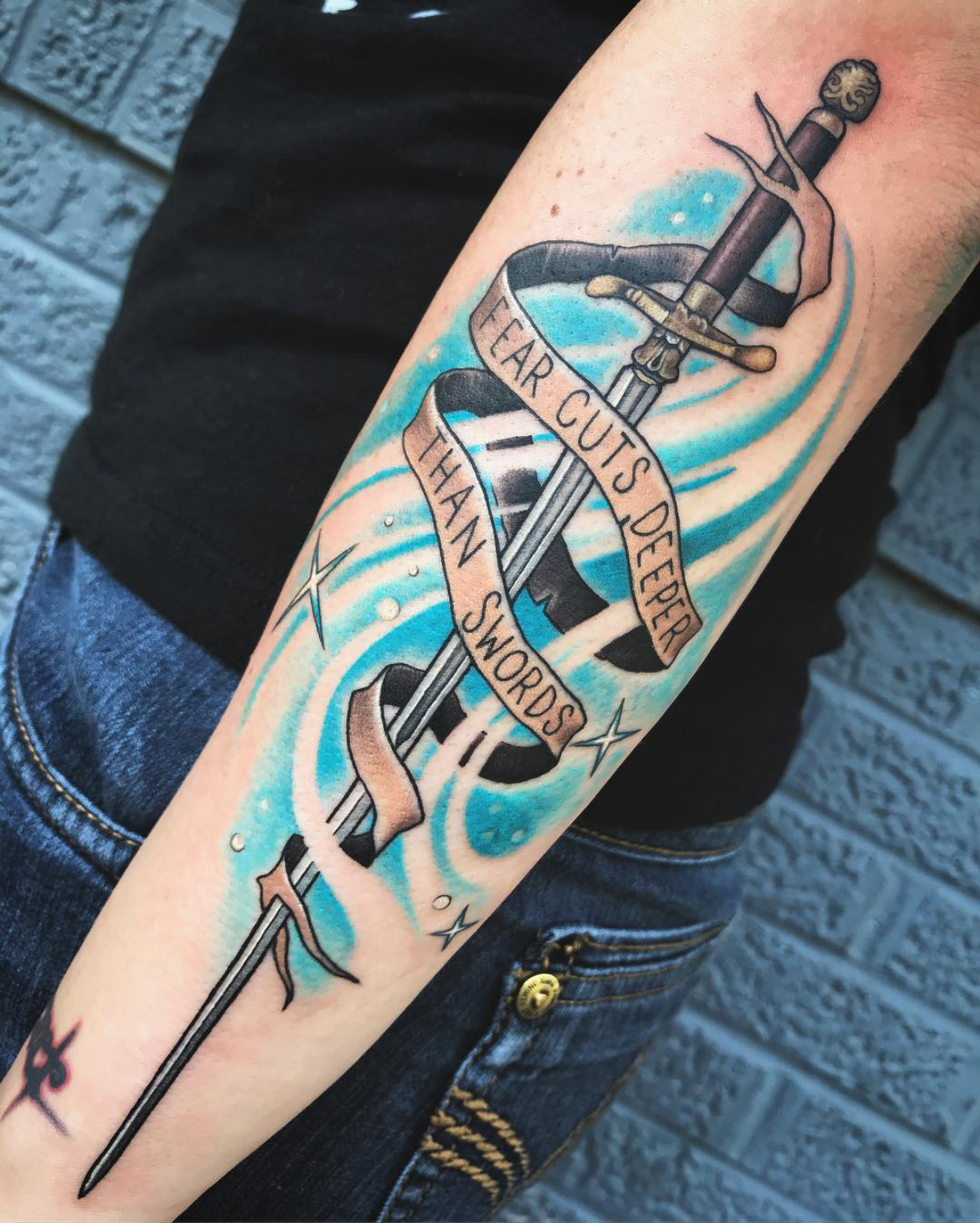
- Check their portfolio specifically for fantasy, realism, or the style you want.
- Read recent client reviews on multiple platforms, not just their own website.
- Do a consultation to see if your personalities and visions align.
- Ensure the studio is impeccably clean and professionally licensed.
The right artist for your epic tattoo won’t just be skilled; they’ll be as passionate about bringing your vision to life as you are.
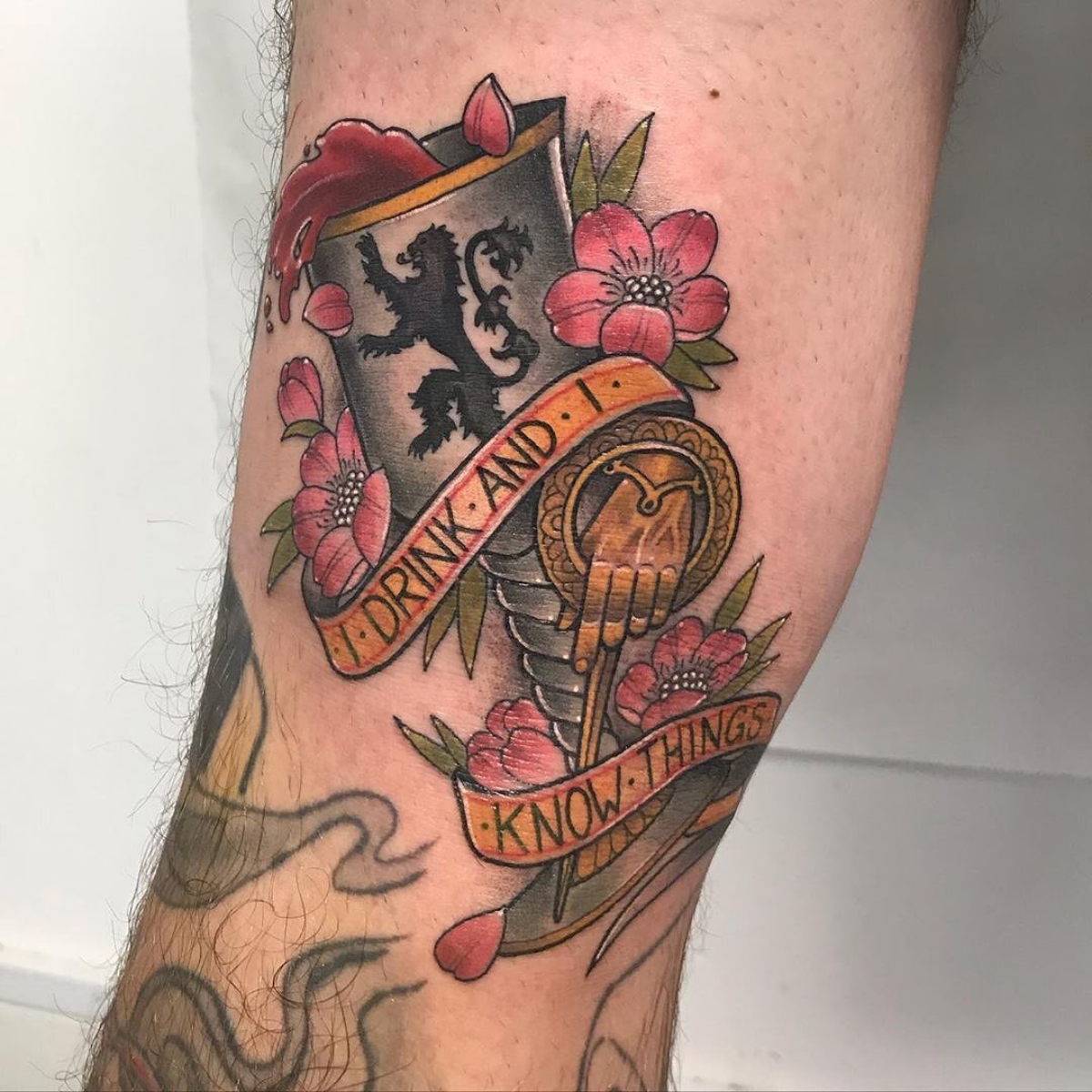
Placement is part of the storytelling. A dragon wrapped around a forearm feels alive with every movement. A Weirwood tree sprawling up the spine connects to the body’s core. Think about how the anatomy and flow of your body can enhance the design’s narrative. This isn’t just about finding a blank space; it’s about making the art and body one.

“A reader lives a thousand lives before he dies . . . The man who never reads lives only one.” ― George R.R. Martin
This sentiment is the very reason these fantasy tattoos feel so essential. You’re not just marking your skin with a cool image; you’re honoring one of the many lives you’ve lived through these epic tales.
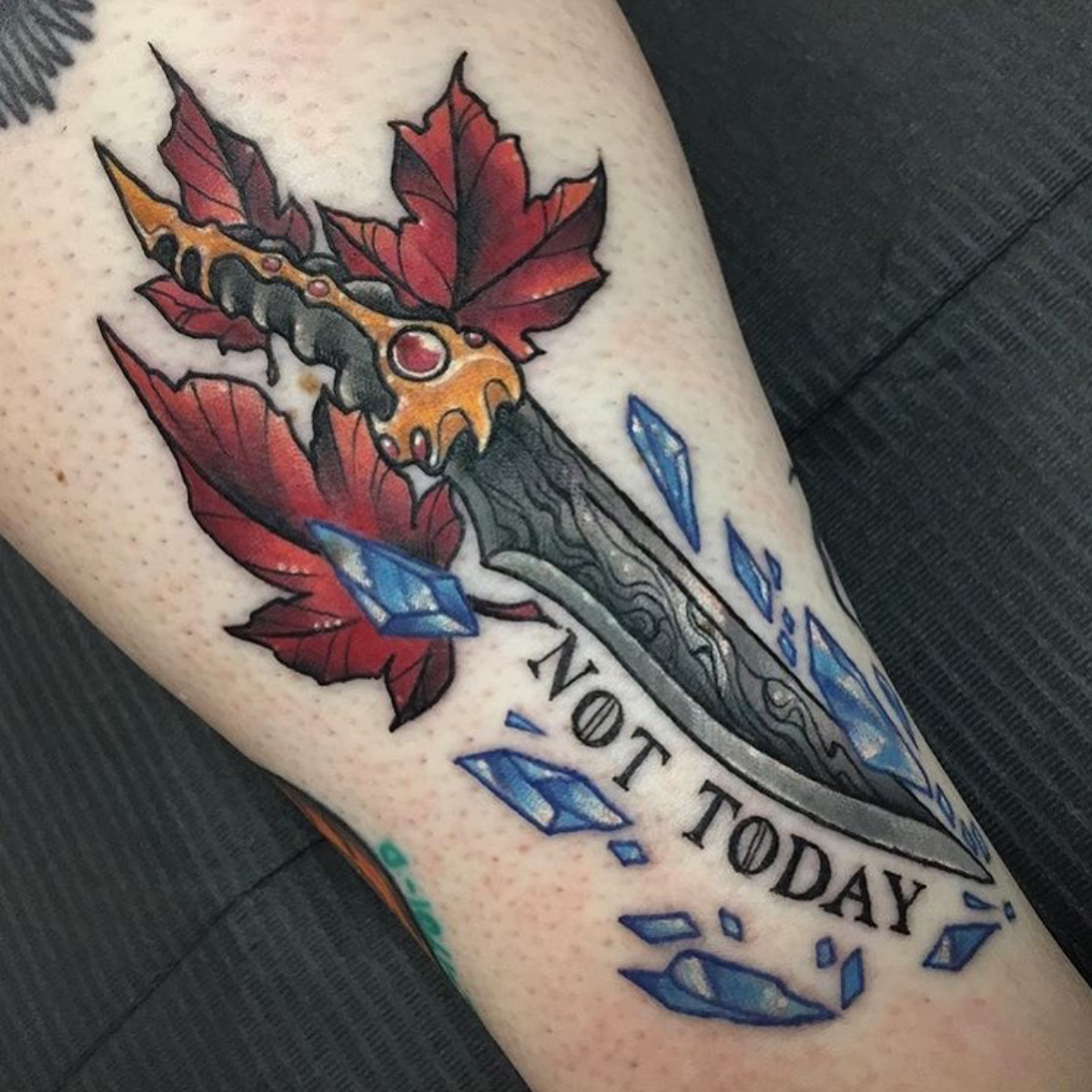
So you want a dragon tattoo? The artistic style you choose completely changes its meaning and feel:
- Black and Grey Realism: Perfect for capturing the ancient, leathery texture of Balerion the Black Dread. It’s all about shadow, depth, and intimidating detail.
- Neo-Traditional: Uses bold lines and a richer color palette than old-school tattoos. This style would make for a vibrant, powerful Drogon, Rhaegal, or Viserion.
- Illustrative/Etching: Mimics the look of a woodcut or a drawing from an old Westerosi tome, giving it a historical, almost mythical quality.
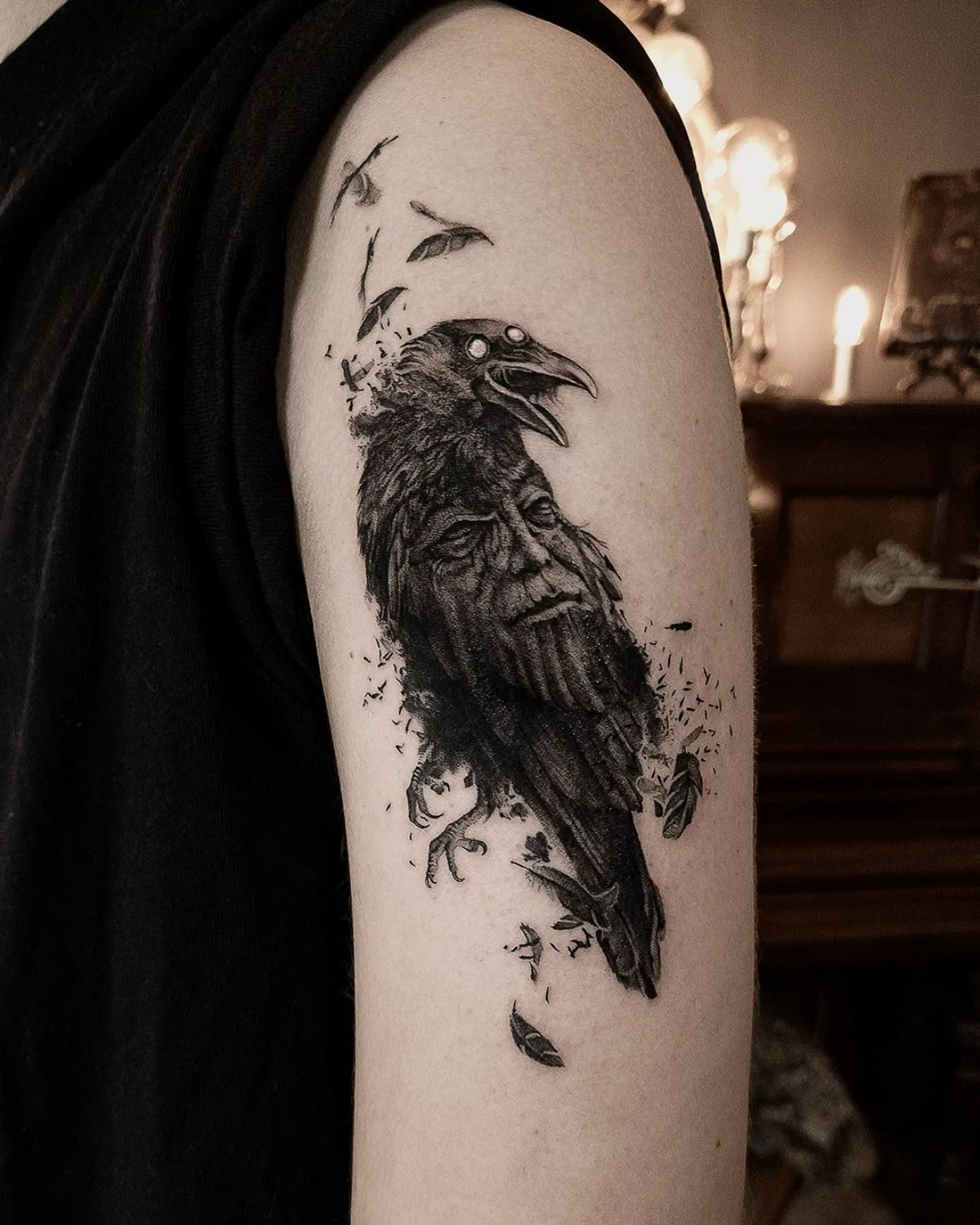
Can I really get a hyper-realistic portrait of a character like Tyrion or Arya?
Absolutely, but it’s a major commitment. A good portrait requires a large, relatively flat canvas (like a thigh or outer bicep) to prevent distortion and allow for detail. You must seek out an artist who specializes in realism, as poorly executed portraits age badly. Be prepared for a higher price point and multiple long sessions, but the result can be a stunning tribute.

The Sigil: Bold, iconic, and instantly recognizable. A Stark direwolf or a Targaryen dragon is a powerful statement of allegiance. It’s a classic for a reason.
The Quote: More subtle and personal. A phrase like “Valar Morghulis” or “The things I do for love” in a custom script is an insider’s nod. It’s less about the house and more about the philosophy.
One speaks to identity, the other to a moment or belief. Which one tells your story?
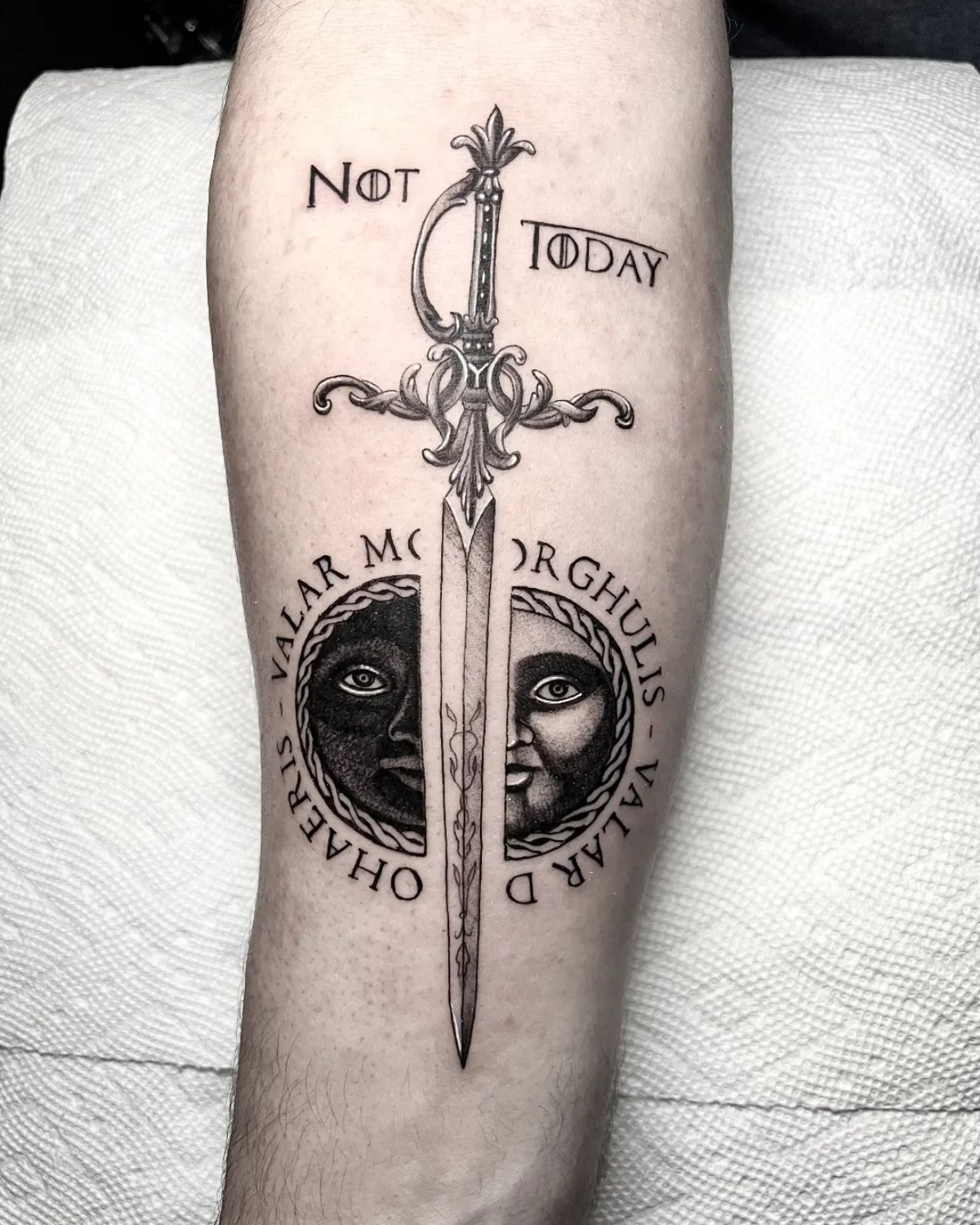
A 2019 study showed that fine-line tattoos, especially those under 2 inches, have a higher likelihood of significant fading or blurring within 5 to 10 years.
What does this mean for your tiny Iron Throne on your wrist? It means you must trust your artist if they suggest increasing the size. They aren’t trying to upsell you; they are planning for your tattoo to remain legible and beautiful for life, not just for the first year.
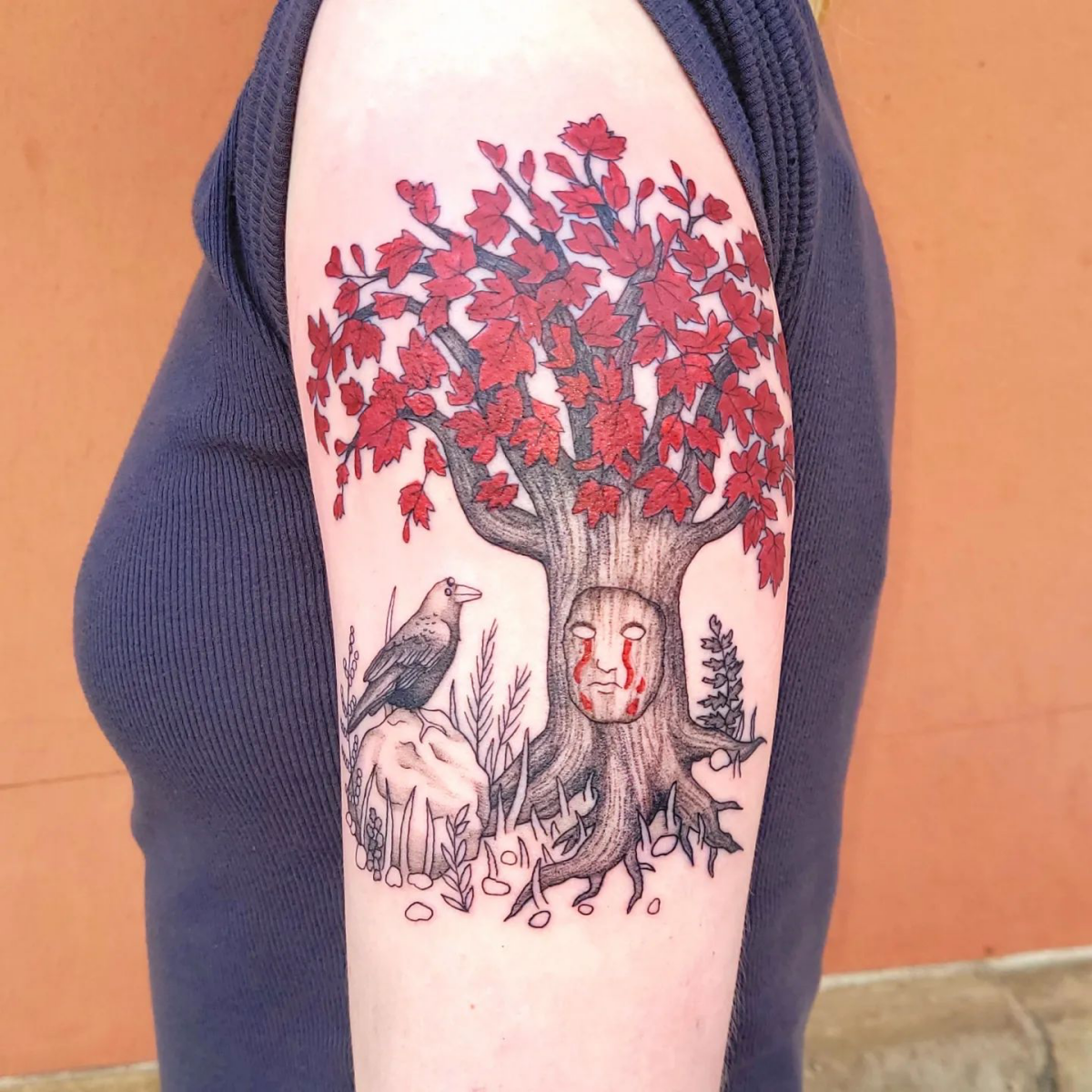
- It provides a massive, uninterrupted canvas for a grand scene.
- The design is protected from the majority of daily sun exposure, preserving the ink.
- It remains a personal piece, easily concealed in professional settings.
The ultimate placement for that sprawling Battle of the Bastards scene or a full depiction of the Red Keep? Your back. It is the premier canvas for epic fantasy artwork.
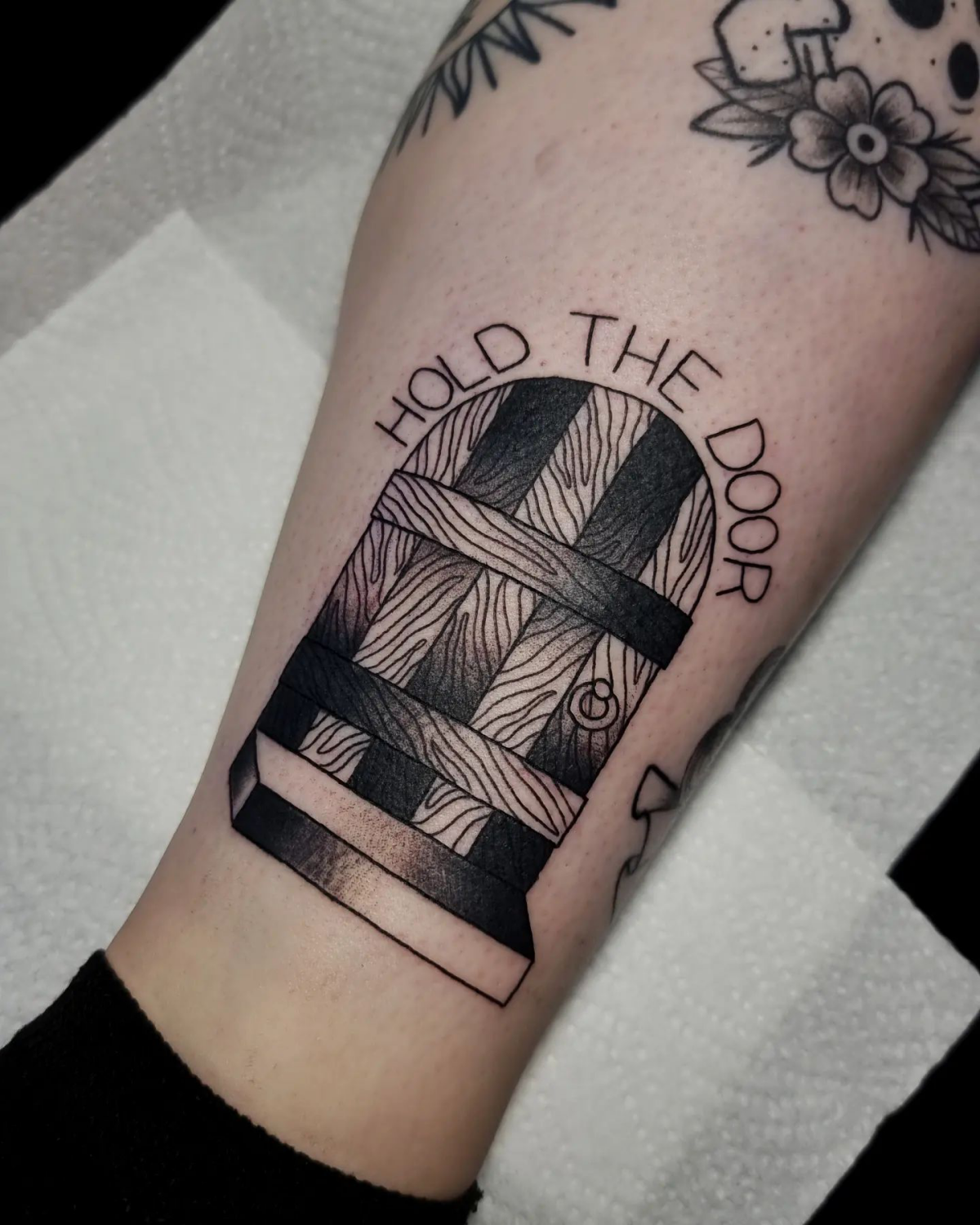
Quality aftercare is non-negotiable for preserving your art. For the first few weeks, proper healing is crucial. Many artists now recommend a transparent healing film like Saniderm or Dermalize. This “second skin” protects the tattoo from bacteria while allowing it to breathe, significantly reducing scabbing and ink loss. After it comes off, a quality unscented balm like Hustle Butter Deluxe keeps the skin hydrated for a sharper, more vibrant long-term result.
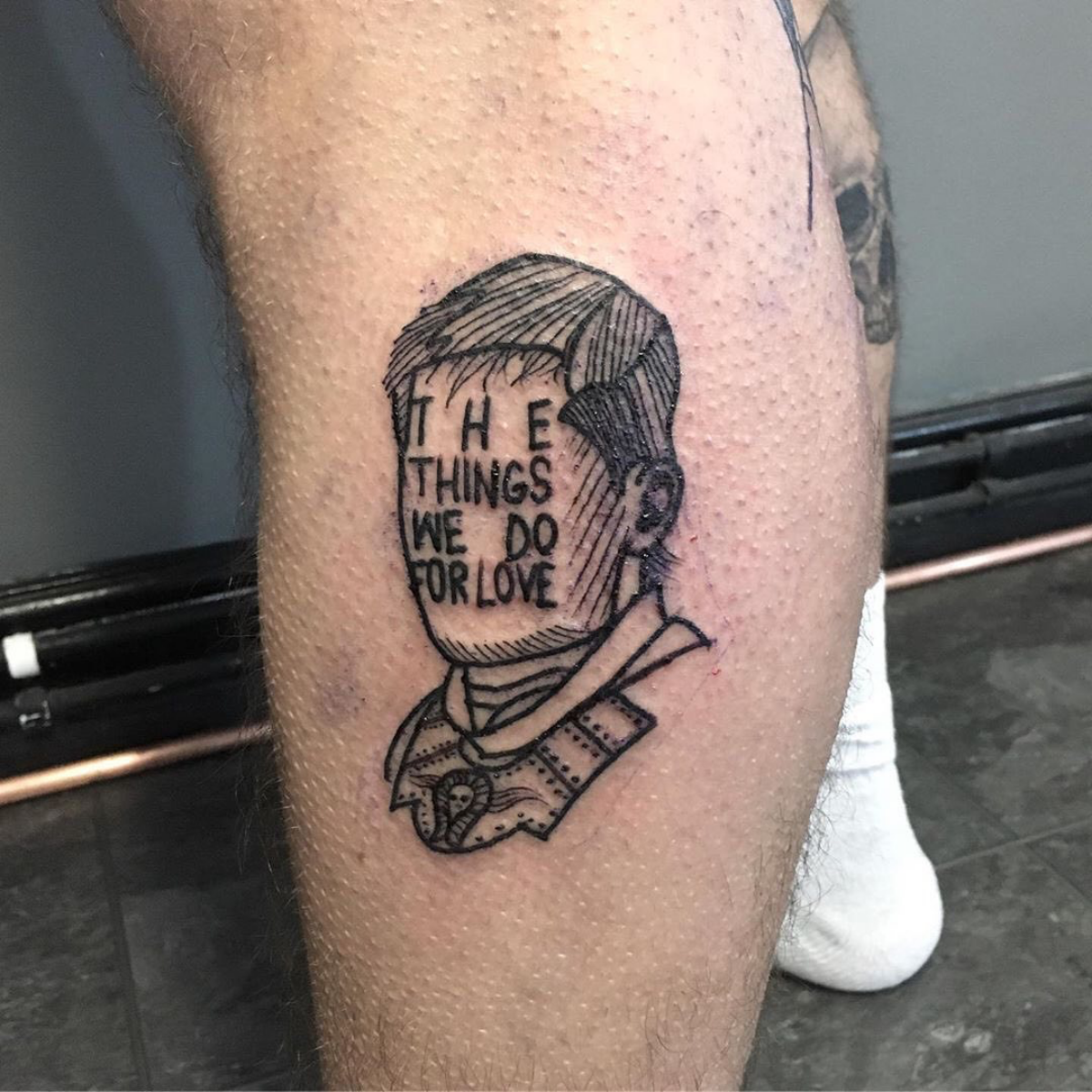
Think about longevity: Black and Grey vs. Color. Black and grey ink is carbon-based, its molecules are larger, making it incredibly resilient to time and sun. It ages gracefully, often just softening over the decades. Colors, especially yellows and light blues, are more susceptible to fading from UV exposure. A color piece is stunning but requires more diligent, lifelong sunscreen application to stay vibrant.
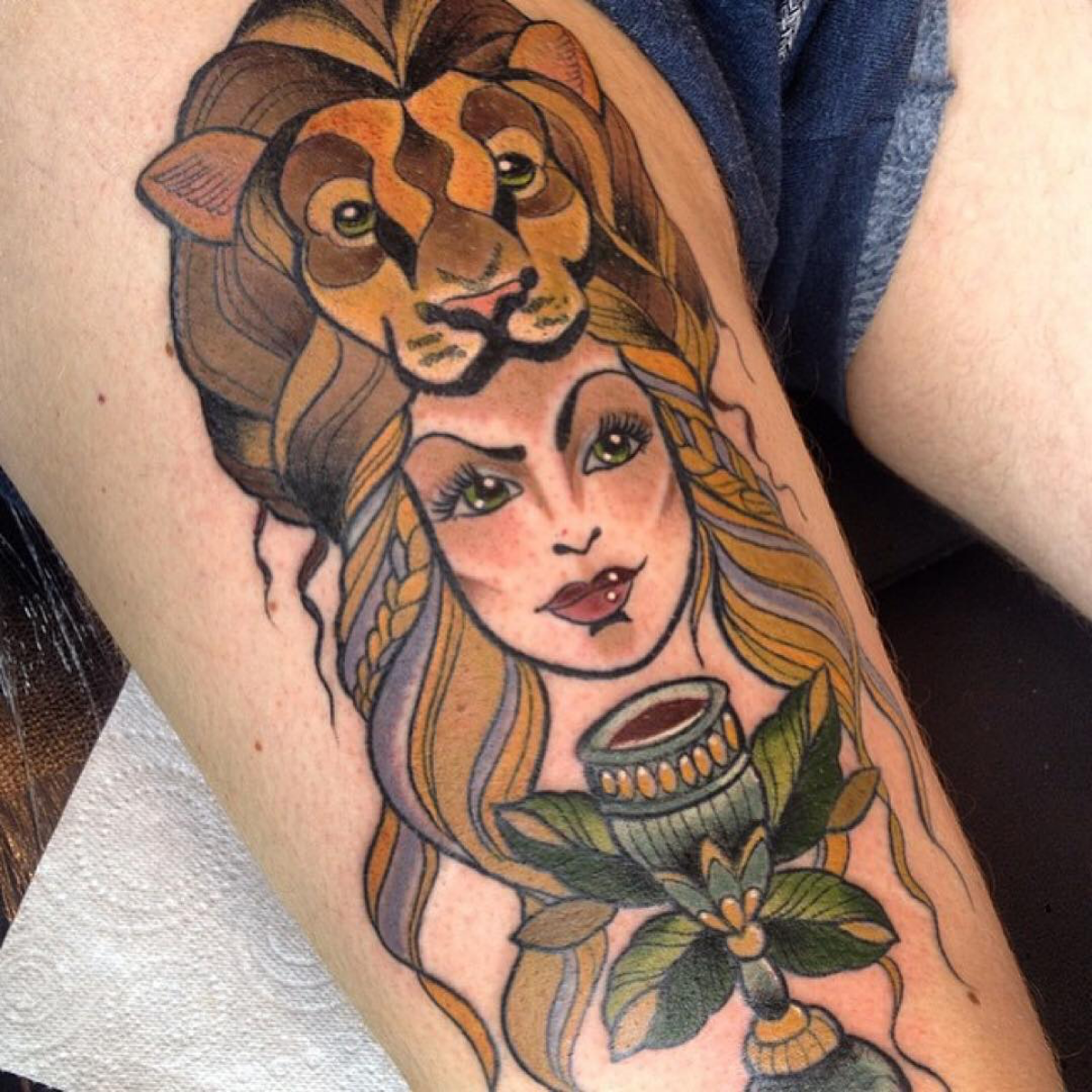
What about a white ink tattoo, maybe for Ghost the direwolf?
Tread carefully. White ink is notoriously unpredictable. On some skin tones, it can fade to invisibility within a year; on others, it can yellow over time with sun exposure. It’s often best used as a highlight within a larger black or color piece rather than as a standalone design. For a subtle “ghostly” effect, a skilled artist can achieve more with light grey shading.
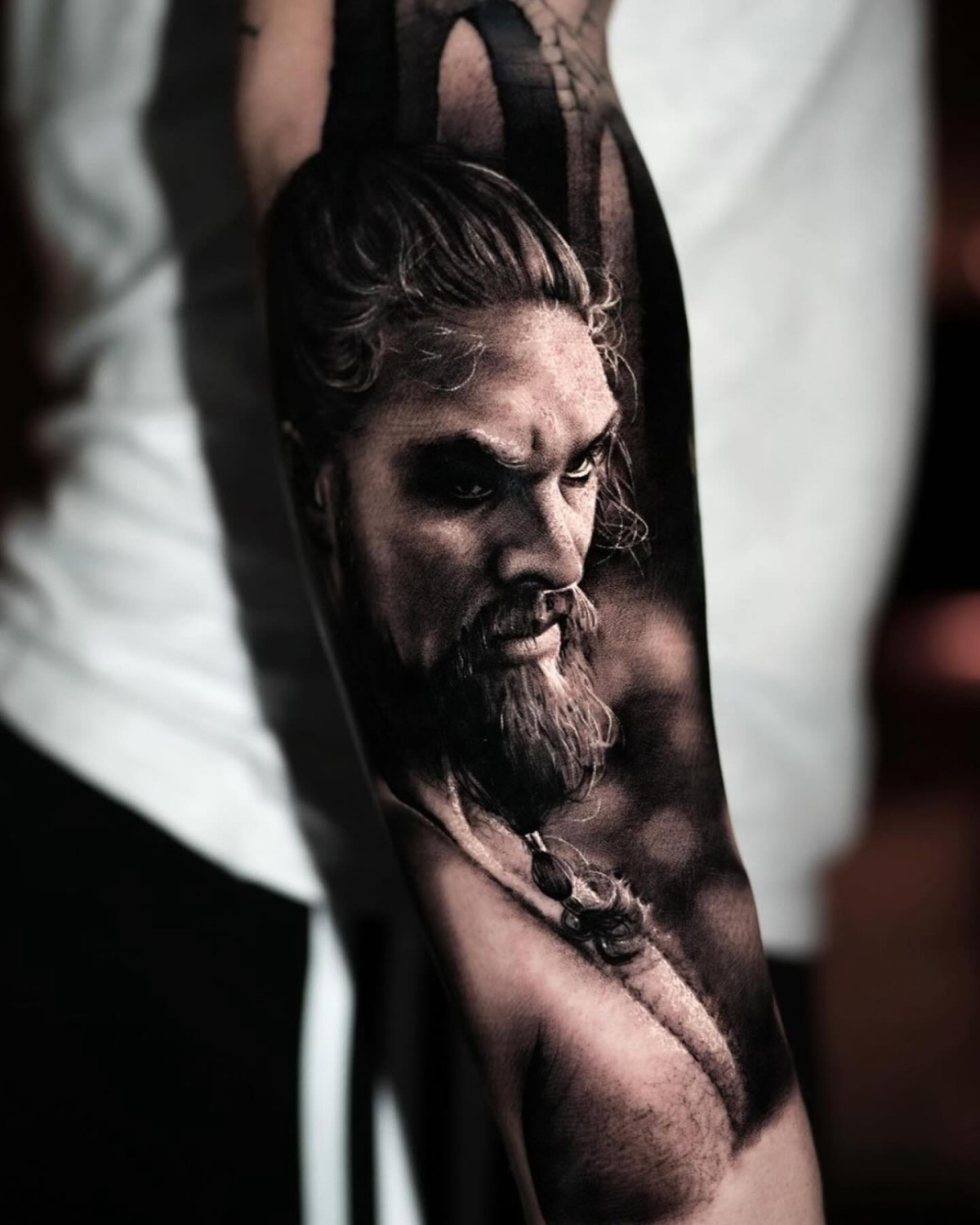
The Iron Throne in the books is a monstrous, asymmetrical beast of melted swords, described by George R.R. Martin as being 10 to 16 feet high. The show’s version is much smaller and more symmetrical for filming purposes.
When you ask for an “Iron Throne” tattoo, which one do you mean? Discussing these details with your artist—book vs. show canon—is part of the fun and ensures you get the exact piece of lore you’re passionate about.
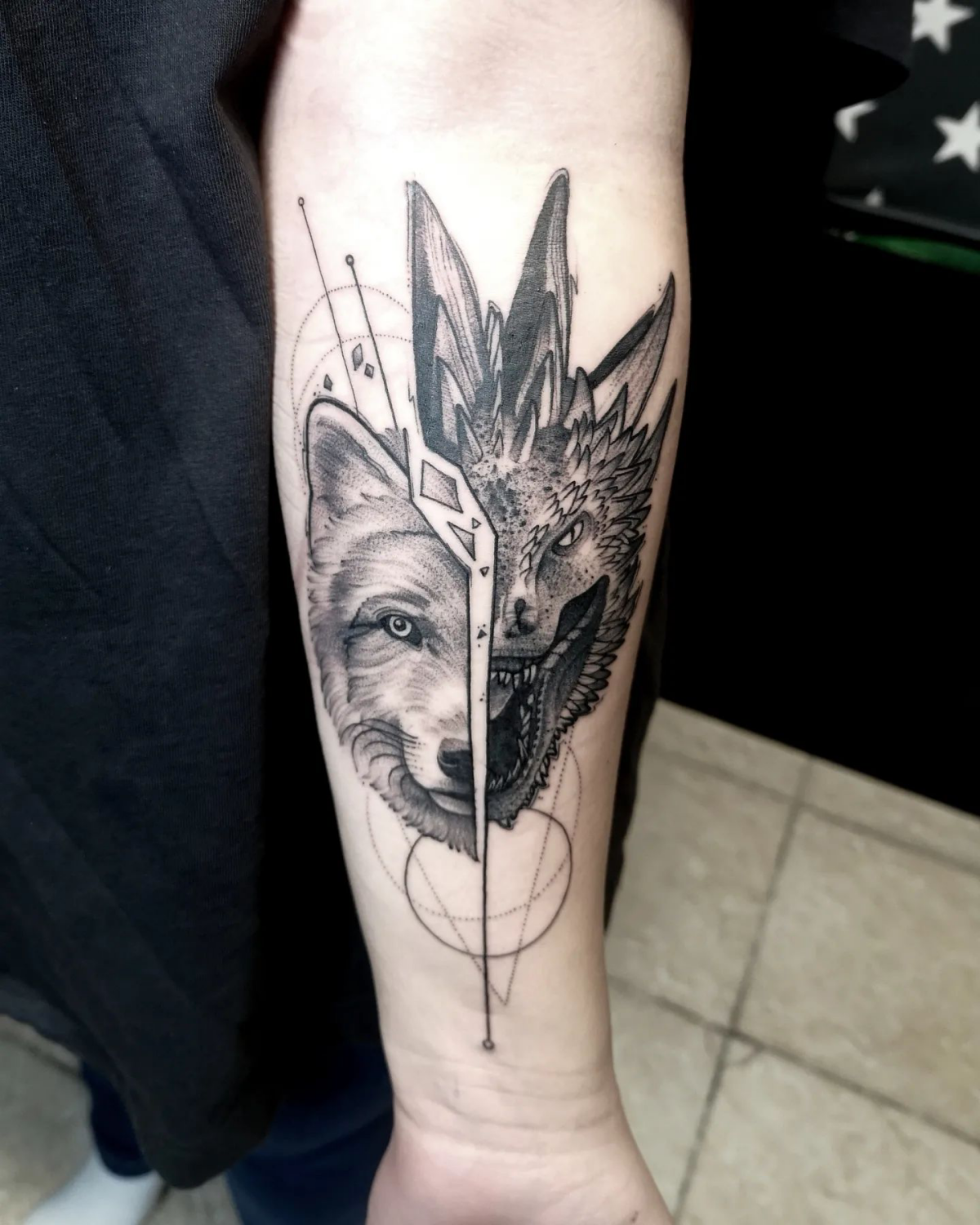
Let’s talk lettering. Don’t just pick a font from a website for your “Not Today” or “Fear cuts deeper than swords” tattoo. A true artist will hand-draw the lettering to fit the flow of your body part. The script can be elegant and calligraphic like a Maester’s scroll, or harsh and angular like ancient First Men carvings. The font itself is a key part of the design.
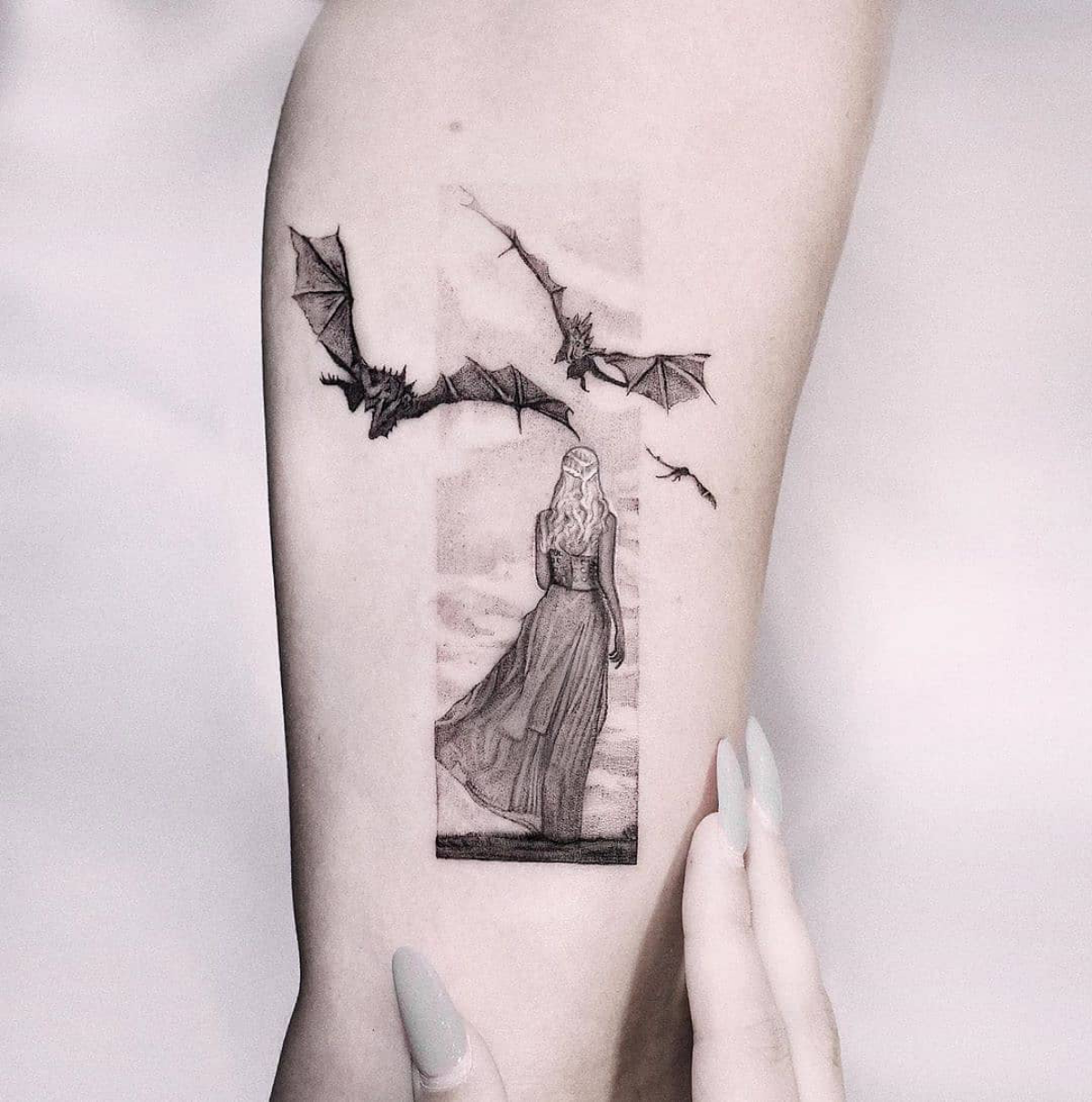
- A kraken from House Greyjoy, representing untamed ambition.
- The sun-and-spear of House Martell, for those who are “Unbowed, Unbent, Unbroken.”
- House Mormont’s fierce bear, a symbol of loyalty and strength.
- The simple, solemn vow of the Night’s Watch for a minimalist take.
Look beyond the main houses for a symbol that truly resonates with your own values.
A great tattoo is an investment, so protect it. Sunscreen is the single most important factor in a tattoo’s longevity. UV rays break down ink pigments and cause fading. For daily protection, consider a high-SPF, broad-spectrum sunscreen. Brands like EltaMD or even stick formulas from Neutrogena are great for easy, non-greasy application directly on your art. Think of it as daily maintenance for a masterpiece.










